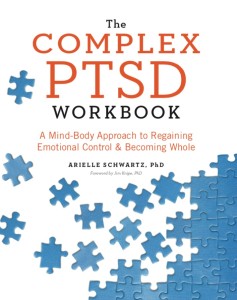The development and expression of PTSD is complex and involves not only being exposed to a traumatic event but also your perception of it, the amount of current support, existence of previous traumatic events, your early family life, and biological factors that shape how you adapt.
“Research is suggesting that unresolved PTSD can facilitate lasting physiological changes and that these modifications can be passed on to the next generation.”
-Dr. Schwartz
Neurobiology of Stress, Trauma, and PTSD
Typically, when faced with a stressful or traumatic event, your body responds by giving you the energy you need to respond effectively to the challenging event. The hypothalamic pituitary adrenal (HPA) axis releases cortisol which signals the release of glucose providing you with the fuel to respond (the mobilization response). The HPA also has a built in negative feedback loop that stops the release of cortisol once the stressful event is resolved allowing you to rest.
An evolutionarily older biological system comes into play when you cannot escape the threat, if you believe that you will die, or perceive that there is no end to what is happening. In this case, the body gets signals to slow or shut down (the immobilization response). Recovery from immobilization takes significantly longer and having good trauma therapy, social support, and getting exercise is important.
 Bold (Ctrl + B)
Bold (Ctrl + B)
In the case of PTSD, the biological effects endure and involve two clusters of symptoms; high arousal symptoms (e.g. nightmares, flashbacks, feeling keyed up) and low arousal symptoms (feeling numb, cut off, or hopeless). High cortisol levels are responsible for high arousal symptoms such as hypervigilance or increased startle reactions and low cortisol levels are seen with the low arousal symptoms such as numbing or dissociation.
The Enduring effects of PTSD
Research is revealing neuroanatomical and physiological changes associated with unresolved PTSD. Unresolved PTSD changes how the body manages cortisol. Studies indicate that unresolved PTSD interferes with the negative feedback system in the HPA. In this case the body continues to receive the signal to release cortisol. Furthermore, research reveals an increase in the number of cortisol receptors in the body resulting in less available cortisol in the bloodstream. As a result, PTSD is associated with ongoing high cortisol release (i.e. feeling keyed up) and low available or usable cortisol for effective mobilization (i.e. feeling stuck).

Additionally, the primary brain structures involved in memory, learning, fear conditioning and emotion are the amygdala and hippocampus. In order to respond effectively when faced with a trauma we need hippocampal activity to be able to reflect accurately on our perceptions of threat, recall similar events, believe ourselves capable of responding effectively, and access the memory of how we successfully navigated a similar challenge in the past. As measured by fMRI, unresolved PTSD ultimately reduces the size of the hippocampus (Gurvits et al.,1996). As a result, persistent PTSD is associated with increases in amygdala’s involvement in learned fear and disruptions in the mediating factors of the hippocampus.
PTSD across Generations
Research indicates that PTSD runs in families and children of trauma survivors with PTSD are significantly more likely to develop PTSD. Adult children of holocaust survivors with PTSD had a higher risk of developing PTSD following trauma and Cambodian refugee children whose parents had PTSD were five times more likely to receive the diagnosis than refugee children whose parents did not have PTSD (Nugen, Amstadter, & Koenen; 2008). Here are some possible causes of the transgenerational predisposition to PTSD:

- Environment: Parents with PTSD respond differently to their children resulting in greater disruptions in care and attachment. Mothers with PTSD are more likely to be both overprotective and reactive and as a result children may develop less-secure attachment.
- In Utero Influence: Research has been following the infants born to mothers who were pregnant and diagnosed with PTSD after the 9/11 attacks to the world trade center. Studies suggest that these infants were exposed to maternal PTSD related cortisol changes (A review of this research here). As a result, the infants had low birth weight and revealed decreased levels of bloodstream cortisol when compared to a normative group.
- Epigenetic: Studies of 2nd generation children of holocaust survivors reveal that children of mothers with PTSD are more likely to develop PTSD as differentiated from children whose father’s had PTSD suggesting the possible influence of genetics as differentiated from environmental influence (full article here). Twin studies also reveal a greater prevalence of PTSD among trauma survivors who also had a twin with PTSD further reinforcing a genetic model. While more research is needed to tease apart the nature vs. nurture debate, results strongly suggest that there may be an epigenetic component to the transgenerational transmission of trauma.
Implications for Treatment

Healing from PTSD is possible. It often takes time and this depends upon the type of trauma(s) as well as your access to resources and support systems. Your family history provides insight into your predispositions but does not need to define you. I often describe the outcome of healing from trauma as regaining a sense of choice about how you live your life. Because trauma involves both our biology and our psychology; trauma therapy ideally should attend to your body and mind through both somatic trauma treatment models and cognitive-behavioral therapeutic interventions such as EMDR.
Learn more here:
- How you can work with your intergenerational legacy
- Awareness of your physiology helps you heal from trauma
- Understand the connections between trauma and your health
Want to learn more about healing complex PTSD?
Connect to this post? This post includes an excerpt from my book, The Complex PTSD Workbook, now available on Amazon! Click here to check it out and increase your toolbox for healing. Whether you are a client or a therapist this book will offer a guided approach to trauma recovery.
About Dr. Arielle Schwartz

Dr. Arielle Schwartz is a licensed clinical psychologist, wife, and mother in Boulder, CO. She offers trainings for therapists, maintains a private practice, and has passions for the outdoors, yoga, and writing. Dr. Schwartz is the author of The Complex PTSD Workbook: A Mind-Body Approach to Regaining Emotional Control and Becoming Whole. She is the developer of Resilience-Informed Therapy which applies research on trauma recovery to form a strength-based, trauma treatment model that includes Eye Movement Desensitization and Reprocessing (EMDR), somatic (body-centered) psychology and time-tested relational psychotherapy. Like Dr. Arielle Schwartz on Facebook, follow her on Linkedin and sign up for email updates to stay up to date with all her posts.





About The Author: Caroline
More posts by Caroline